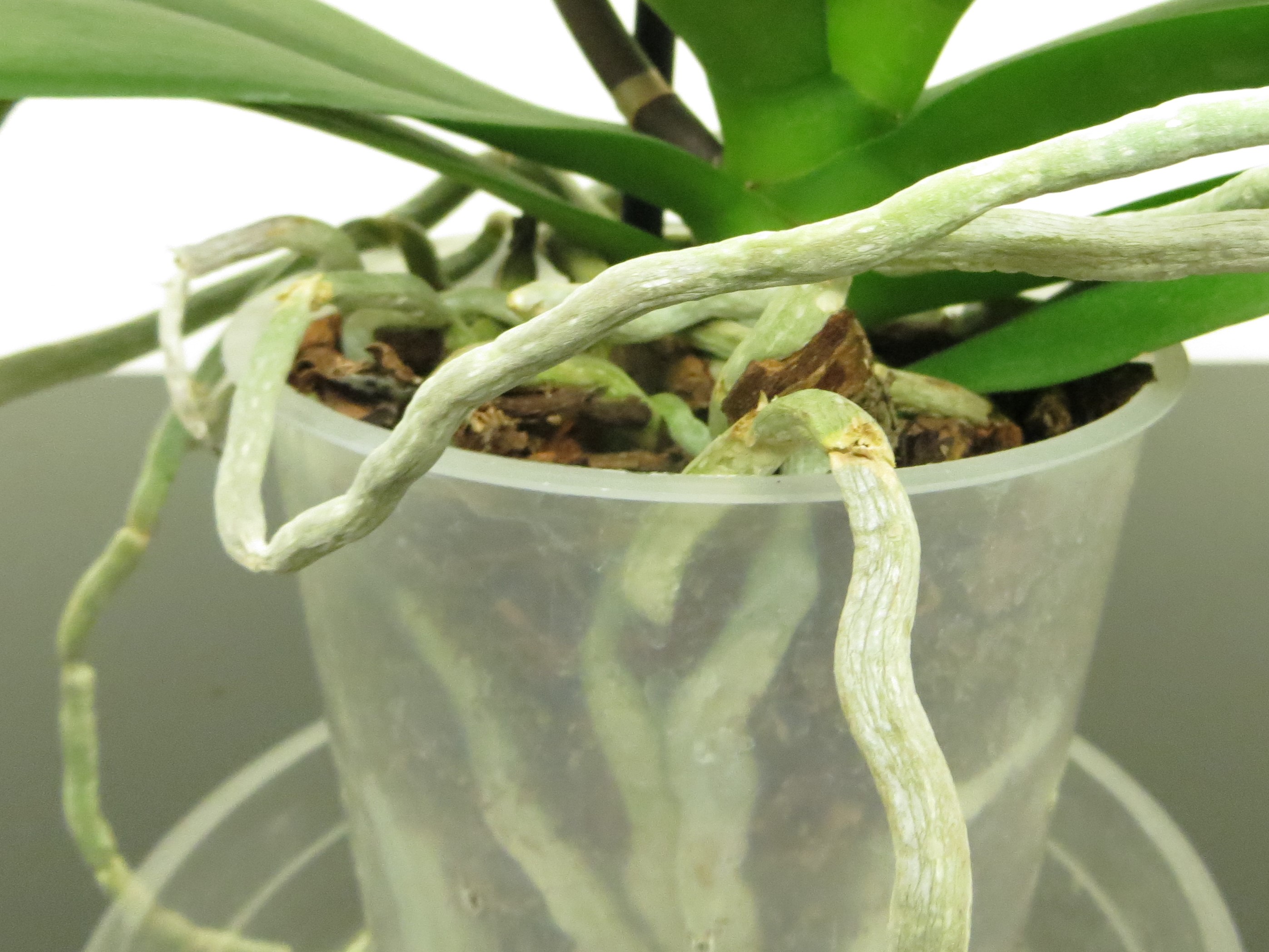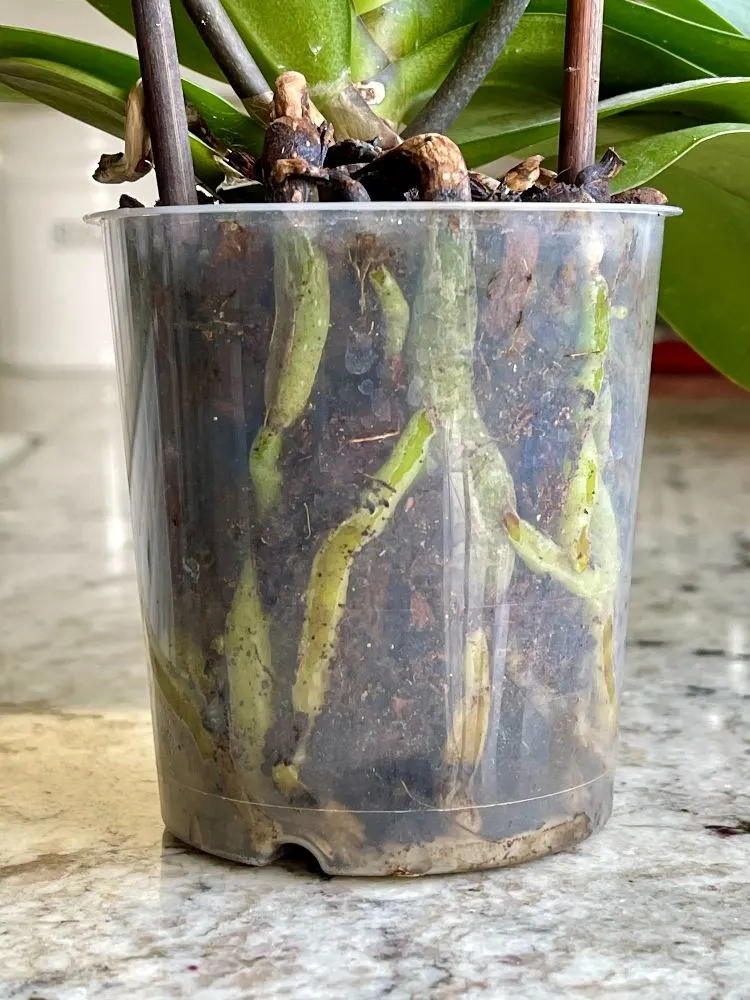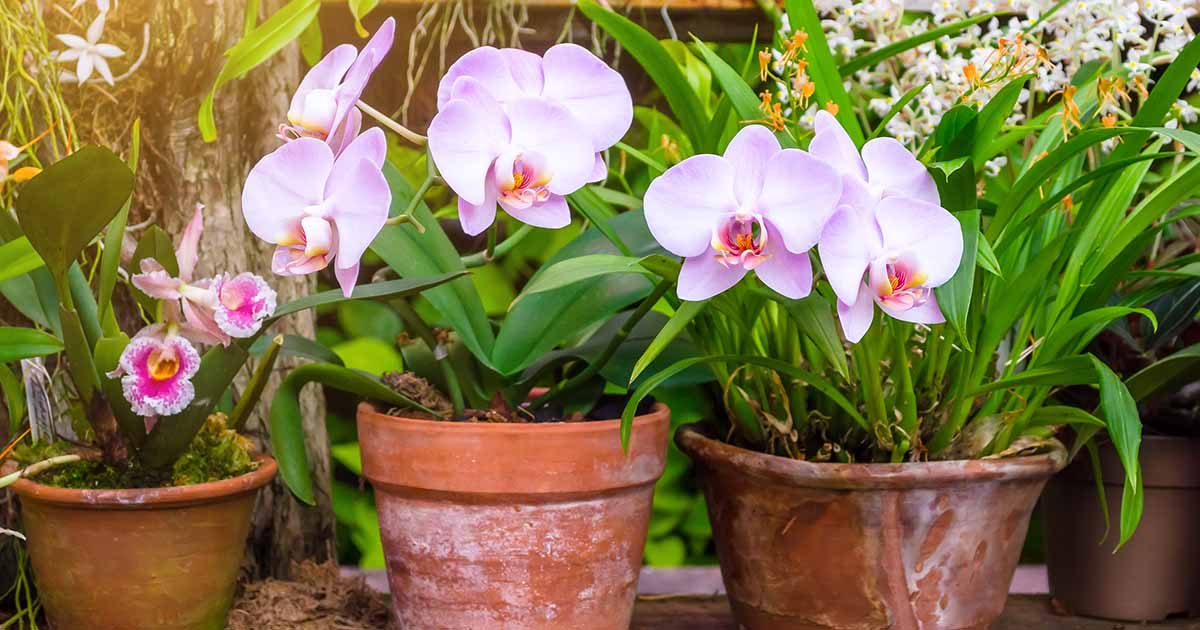Understanding Orchid Varieties: Factors Affecting Height
Orchids are one of the most diverse and widespread families of flowering plants, with over 30,000 known species. When it comes to understanding how tall an orchid can grow, it’s essential to recognize that different varieties exhibit unique growth habits. Some orchids, such as the Phalaenopsis, are naturally compact and may only reach heights of 6-12 inches (15-30 cm). In contrast, other varieties like the Dendrobium can grow quite tall, reaching heights of 3-6 feet (90-180 cm) or more.
The height of an orchid is influenced by a combination of genetic and environmental factors. For example, some orchids may have a naturally upright growth habit, while others may be more prone to sprawling or climbing. Additionally, factors such as light, temperature, and humidity can also impact an orchid’s growth rate and overall height.
When considering how tall an orchid can grow, it’s also important to think about the specific growing conditions required by each variety. Some orchids, such as the Cattleya, require bright, direct light to bloom and grow well, while others, like the Paphiopedilum, prefer shadier conditions. By understanding the unique needs of your orchid variety, you can provide the optimal environment for healthy growth and development.
Whether you’re a seasoned orchid enthusiast or just starting to explore the world of orchid cultivation, understanding the factors that affect an orchid’s height can help you provide the best possible care for your plants. By recognizing the unique characteristics of each variety and tailoring your care routine accordingly, you can help your orchids reach their full potential and thrive in their environment.
So, how tall does an orchid grow? The answer depends on the specific variety, growing conditions, and care routine. By understanding these factors and providing optimal care, you can help your orchids grow and flourish, reaching heights that are both impressive and beautiful.
The Role of Lighting in Orchid Growth: How to Promote Healthy Development
Lighting is one of the most critical factors in promoting healthy growth and development in orchids. When it comes to understanding how tall an orchid can grow, it’s essential to recognize the importance of providing the right amount of light. Orchids generally require bright, indirect light to photosynthesize and grow, but the specific lighting needs can vary depending on the type of orchid.
Some orchids, such as the Phalaenopsis, can thrive in low-light conditions and can be placed near an east- or west-facing window. Others, like the Vanda, require full sun to partial shade and can be placed near a south-facing window. It’s crucial to research the specific lighting needs of your orchid variety to ensure you’re providing the optimal conditions for growth.
In addition to the type of light, the duration of light exposure is also important. Most orchids require 10-12 hours of light per day, but some species can tolerate more or less light. For example, the Paphiopedilum can tolerate low light conditions and can be placed in a shaded area, while the Dendrobium requires more light and can be placed near a sunny window.
To ensure your orchid is receiving the right amount of light, you can use a few simple techniques. One way is to observe the color of the leaves. If the leaves are a deep green color, it may be a sign that the orchid is receiving too much light. On the other hand, if the leaves are a light green or yellowish color, it may be a sign that the orchid is not receiving enough light.
Another way to ensure your orchid is receiving the right amount of light is to use a light meter. A light meter can measure the intensity of the light and provide a reading in foot-candles or lux. This can help you determine if the light is too intense or too weak for your orchid.
By providing the right amount of light, you can promote healthy growth and development in your orchid. This, in turn, can help your orchid grow tall and strong, reaching its full potential. Whether you’re a seasoned orchid grower or just starting out, understanding the role of lighting in orchid growth is essential for success.
Watering and Humidity: The Delicate Balance for Optimal Growth
Watering and humidity are two of the most critical factors in promoting healthy growth and development in orchids. When it comes to understanding how tall an orchid can grow, it’s essential to recognize the importance of maintaining a delicate balance between watering and humidity. Over-watering can lead to root rot, while under-watering can cause stress, both of which can negatively impact an orchid’s growth.
Orchids require a consistent level of moisture to thrive, but the specific watering needs can vary depending on the type of orchid, the potting mix, and the environment. As a general rule, orchids should be watered once a week in the summer and once every 10-14 days in the winter. However, this can vary depending on the specific needs of your orchid.
Humidity is also an essential factor in promoting healthy growth and development in orchids. Most orchids prefer a humid environment, typically between 40-70% relative humidity. However, some species can tolerate lower humidity levels, while others require higher levels. For example, the Phalaenopsis can tolerate a relatively low humidity level of 40%, while the Paphiopedilum requires a higher humidity level of 60-70%.
To maintain the right balance of watering and humidity, it’s essential to monitor your orchid’s environment and adjust your care routine accordingly. One way to do this is to use a hygrometer to measure the humidity level in your orchid’s environment. You can also use a moisture meter to check the moisture level in the potting mix.
Another way to ensure your orchid is receiving the right amount of water and humidity is to observe its leaves and roots. If the leaves are wrinkled or shriveled, it may be a sign that the orchid is not receiving enough water. On the other hand, if the leaves are soft and mushy, it may be a sign that the orchid is receiving too much water.
By maintaining a delicate balance between watering and humidity, you can promote healthy growth and development in your orchid. This, in turn, can help your orchid grow tall and strong, reaching its full potential. Whether you’re a seasoned orchid grower or just starting out, understanding the importance of watering and humidity is essential for success.
Orchid Potting Mix: The Key to Supporting Healthy Root Growth
When it comes to growing orchids, the potting mix is a critical component that can make or break the plant’s ability to thrive. A well-draining potting mix specifically designed for orchids is essential for supporting healthy root growth, which in turn promotes overall plant growth and development. But what makes a good orchid potting mix, and how can you choose the right one for your plant?
A good orchid potting mix should have several key characteristics. First, it should be well-draining, meaning that it allows excess water to drain quickly and easily. This is important because orchids are prone to root rot if the potting mix is too wet. Second, the mix should be able to retain moisture, but not so much that it becomes waterlogged. Finally, the mix should be rich in nutrients and have a slightly acidic pH, which is ideal for orchid growth.
There are many different types of orchid potting mixes available, and the right one for your plant will depend on the specific needs of your orchid. Some popular options include sphagnum moss, perlite, and coconut husk. Sphagnum moss is a popular choice because it is highly absorbent and can retain moisture well, but it can be prone to drying out if not watered regularly. Perlite is a good option for orchids that prefer well-draining soil, while coconut husk is a sustainable and eco-friendly option that is rich in nutrients.
When choosing an orchid potting mix, it’s also important to consider the specific needs of your plant. For example, some orchids prefer a more acidic potting mix, while others prefer a more alkaline mix. You should also consider the moisture level of the mix, as some orchids prefer a drier mix while others prefer a more moist mix.
By choosing the right orchid potting mix, you can provide your plant with the support it needs to grow and thrive. A well-draining potting mix can help prevent root rot and promote healthy root growth, which is essential for overall plant growth and development. Whether you’re a seasoned orchid grower or just starting out, understanding the importance of a good potting mix is key to unlocking the secrets of orchid growth.
So, how tall does an orchid grow? The answer depends on a variety of factors, including the type of orchid, the potting mix, and the growing conditions. By providing your orchid with the right potting mix and growing conditions, you can help it reach its full potential and grow tall and strong.
Fertilization: Feeding Your Orchid for Optimal Growth
Fertilization is a crucial aspect of orchid care, as it provides the necessary nutrients for healthy growth and development. When it comes to understanding how tall an orchid can grow, fertilization plays a significant role in promoting optimal growth. But what types of fertilizers should you use, and how often should you apply them?
Orchids require a balanced fertilizer that is high in nitrogen, phosphorus, and potassium. These nutrients promote healthy growth, blooming, and root development. You can use a water-soluble fertilizer or a slow-release fertilizer, depending on your preference. Water-soluble fertilizers are easy to apply and provide immediate results, while slow-release fertilizers provide a steady supply of nutrients over a longer period.
When fertilizing your orchid, it’s essential to follow the instructions on the label carefully. Over-fertilization can damage the roots and leaves, while under-fertilization can lead to stunted growth. A general rule of thumb is to fertilize your orchid once a month during the growing season (spring and summer) and once every two months during the dormant season (fall and winter).
In addition to using a balanced fertilizer, you can also provide your orchid with additional nutrients such as iron, magnesium, and calcium. These micronutrients promote healthy growth and development, and can be applied separately or as part of a balanced fertilizer.
It’s also important to note that different types of orchids have different fertilization requirements. For example, Phalaenopsis orchids require more frequent fertilization than Cattleya orchids. Research the specific fertilization requirements of your orchid variety to ensure you’re providing the right nutrients at the right time.
By fertilizing your orchid regularly, you can promote healthy growth and development, which can help your orchid grow tall and strong. Remember to follow the instructions on the label carefully, and research the specific fertilization requirements of your orchid variety to ensure optimal growth.
So, how tall does an orchid grow? The answer depends on a variety of factors, including the type of orchid, fertilization, and growing conditions. By providing your orchid with the right nutrients and growing conditions, you can help it reach its full potential and grow tall and strong.
Pruning and Training: Shaping Your Orchid for Maximum Growth
Pruning and training are essential techniques for promoting healthy growth and development in orchids. By pruning and training your orchid, you can shape it to achieve the desired shape and size, and encourage it to grow tall and strong. But how do you prune and train an orchid, and what are the benefits of doing so?
Pruning an orchid involves removing dead or damaged leaves and stems, as well as cutting back overgrown or leggy growth. This helps to maintain the plant’s shape and promote healthy growth, and can also encourage the plant to produce more flowers. When pruning an orchid, it’s essential to use clean and sharp tools to prevent spreading disease and to make clean cuts.
Training an orchid involves providing support for the plant as it grows, and can help to encourage it to grow tall and strong. One way to train an orchid is to use a stake or trellis to provide support for the plant’s stems and flowers. This can help to keep the plant upright and promote healthy growth, and can also help to encourage the plant to produce more flowers.
Another way to train an orchid is to use a technique called “air-layering”. This involves making a small incision in the stem of the plant, and then wrapping the area in moist sphagnum moss. This helps to encourage the plant to produce roots and grow new stems, and can be a great way to propagate new plants.
By pruning and training your orchid, you can help to promote healthy growth and development, and encourage it to grow tall and strong. Remember to use clean and sharp tools when pruning, and to provide support for the plant as it grows. With a little practice and patience, you can help your orchid to reach its full potential and grow into a beautiful and thriving plant.
So, how tall does an orchid grow? The answer depends on a variety of factors, including the type of orchid, pruning and training, and growing conditions. By providing your orchid with the right care and support, you can help it to grow tall and strong, and achieve its full potential.
Common Mistakes to Avoid: How to Prevent Stunted Growth in Orchids
When growing orchids, it’s easy to make mistakes that can lead to stunted growth and poor health. However, by being aware of these common mistakes, you can take steps to prevent them and ensure your orchid grows tall and strong. In this section, we’ll discuss some of the most common mistakes to avoid when growing orchids.
One of the most common mistakes is over-watering. Orchids don’t like to be waterlogged, and too much water can lead to root rot and other problems. To avoid this, make sure to water your orchid carefully, and only when the potting mix is dry to the touch.
Another mistake is under-watering. While orchids don’t like to be waterlogged, they still need some water to survive. If the potting mix is too dry for too long, the orchid can become stressed and stop growing. To avoid this, make sure to water your orchid regularly, but not too frequently.
Inadequate lighting is another common mistake. Orchids need bright, indirect light to photosynthesize and grow. If the light is too low, the orchid may not be able to grow properly. To avoid this, make sure to place your orchid in a spot with bright, indirect light, such as an east- or west-facing window.
Using the wrong potting mix is another mistake to avoid. Orchids need a well-draining potting mix that is specifically designed for orchids. Using a regular potting mix can lead to waterlogging and root rot. To avoid this, make sure to use a potting mix that is specifically designed for orchids.
Not fertilizing your orchid is another mistake to avoid. Orchids need fertilizer to grow and thrive. To avoid this, make sure to fertilize your orchid regularly, using a balanced fertilizer that is specifically designed for orchids.
By avoiding these common mistakes, you can help your orchid grow tall and strong. Remember to water carefully, provide bright, indirect light, use the right potting mix, and fertilize regularly. With a little practice and patience, you can help your orchid reach its full potential and grow into a beautiful and thriving plant.
So, how tall does an orchid grow? The answer depends on a variety of factors, including the type of orchid, growing conditions, and care. By providing your orchid with the right care and conditions, you can help it grow tall and strong, and achieve its full potential.
Maximizing Your Orchid’s Potential: Tips for Encouraging Tall, Healthy Growth
With the right care and attention, your orchid can grow tall and strong, producing beautiful blooms and adding a touch of elegance to your home. In this section, we’ll provide tips and tricks for encouraging tall, healthy growth in your orchid, including how to create a trellis or stake to support the plant as it grows.
One of the most important things you can do to encourage tall, healthy growth in your orchid is to provide it with a trellis or stake. This will give the plant something to climb on, allowing it to grow upwards and outwards. You can purchase a trellis or stake at a gardening store, or make your own using a piece of bamboo or a wooden dowel.
Another way to encourage tall, healthy growth in your orchid is to provide it with plenty of light. Orchids need bright, indirect light to photosynthesize and grow, so make sure to place your orchid in a spot with plenty of natural light. You can also use grow lights to supplement the natural light, especially during the winter months when the days are shorter.
Watering and fertilizing your orchid regularly is also important for encouraging tall, healthy growth. Make sure to water your orchid carefully, avoiding over-watering and under-watering. You should also fertilize your orchid regularly, using a balanced fertilizer that is specifically designed for orchids.
Pruning and training your orchid is also important for encouraging tall, healthy growth. Prune your orchid regularly to remove dead or damaged leaves and stems, and train the plant to grow upwards and outwards using a trellis or stake.
By following these tips and tricks, you can encourage tall, healthy growth in your orchid and help it reach its full potential. Remember to provide your orchid with plenty of light, water, and fertilizer, and prune and train it regularly to promote healthy growth and development.
So, how tall does an orchid grow? The answer depends on a variety of factors, including the type of orchid, growing conditions, and care. By providing your orchid with the right care and attention, you can help it grow tall and strong, and achieve its full potential.







